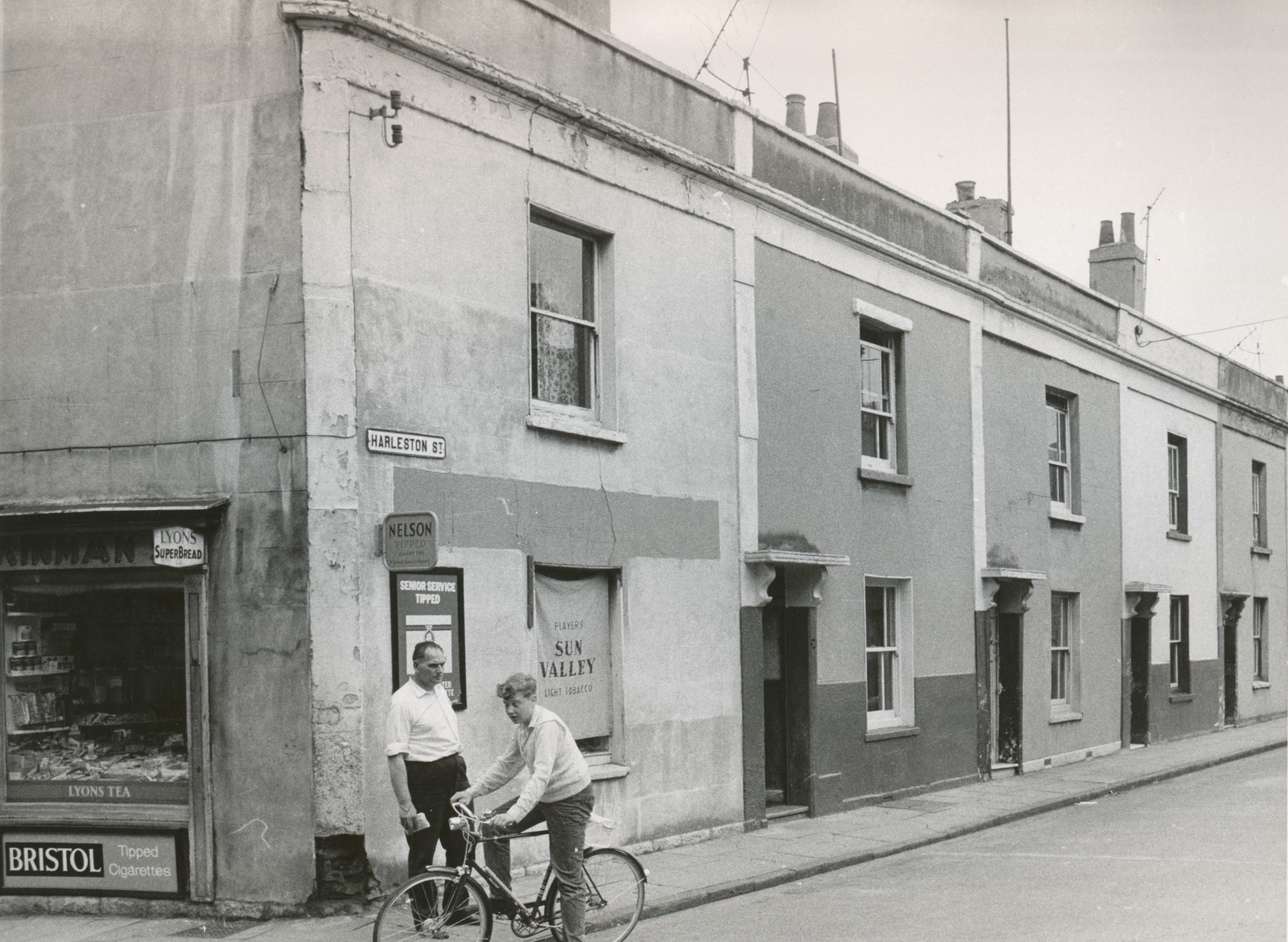Professor Peter Malpass focuses on photographic evidence of Bristol's Victorian street life
This simple photograph of a man talking to a youth on a bicycle on a street corner was taken in Bristol in about 1965. It now evokes memories of an urban Britain before streets were clogged with parked cars and when there were small shops on most corners. It suggests a time when people knew their neighbours and stopped to pass the time of day (and when it was alright for most of the advertising on the shop to promote cigarettes and tobacco). In fact the times, as Bob Dylan noted, were a-changing and Bristol, in common with other large towns and cities, was in the throes of a major redevelopment programme. Harleston Street, a stub end of which remains as a turning off Stapleton Road, was soon to be demolished (the site is now a school playing field).
What really interests me, however, is the houses behind the two people. These houses were constructed between 1828 and 1847, at a time when the population was growing rapidly and houses were beginning to be built in large numbers after a prolonged recession in the industry. Some of the earliest ever photographs were taken in Bristol in the 1840s but no-one then thought to snap images of newly built working class houses, and now there are very few examples left from the first half of the century. Pictures taken before clearance are therefore a valuable resource for urban historians. What we see in this photograph are three narrow fronted terraced houses that were typical of the dwelling aimed at working class tenants at that time. Despite the fact that there were hundreds of small building firms at work in the city, they all seemed to turn out a very similar product: invariably 16 feet wide these houses were two rooms deep, with a scullery and privy behind. The average household then consisted of just over six people, so these little houses must have been pretty crowded by 21st century standards. When these houses were built there was no piped water supply (Bristol Waterworks Company was set up in 1846), and there were no mains drains. We can see that the low-pitched roof is hidden behind a raised parapet. Although we cannot be certain in this case, it is likely that several different builders were involved in building a street that consisted of only 27 houses. It was standard practice for builders to undertake to build just one or two houses at a time, but over the next few years thousands of houses just like these were built in south and east Bristol.
This photograph is a valuable reminder that although a great many Victorian houses still exist in Bristol the majority have gone.
